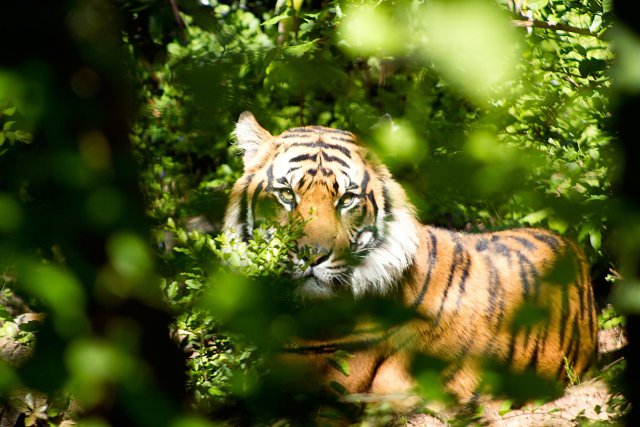7 Remarkable Countries with Wild Tiger Populations
Wild Tiger Populations
Tigers are one of the most majestic and iconic creatures on our planet. With their striking appearance and powerful presence, they have captivated the imaginations of people around the world for centuries. Unfortunately, due to habitat loss and poaching, tiger populations have been declining rapidly in recent years. However, there are still a few countries where these magnificent creatures can be found in the wild. In this article, we will explore seven remarkable countries that are home to wild tiger populations.
1. India
India is often referred to as the land of the tiger, and for good reason. It is home to the largest population of wild tigers in the world. According to the latest tiger census, India has an estimated 2,967 tigers, which accounts for about 70% of the global tiger population. The country has made significant efforts to protect these endangered animals by establishing numerous national parks and wildlife sanctuaries, such as Ranthambore National Park and Bandhavgarh National Park.
2. Russia
Russia is another country that is home to a significant number of wild tigers. The Russian Far East, particularly the Primorsky and Khabarovsk regions, is where most of the country’s tiger population can be found. The Amur tiger, also known as the Siberian tiger, is the largest subspecies of tiger and is native to this region. The Russian government has implemented various conservation measures to protect these tigers, including the establishment of protected areas and anti-poaching efforts.
3. Nepal
Nepal is a small country nestled in the Himalayas, but it is home to a remarkable population of wild tigers. According to the latest census, Nepal has around 235 tigers, a significant increase from previous years. The country has made great strides in tiger conservation by implementing community-based conservation programs and strengthening anti-poaching efforts. Bardia National Park and Chitwan National Park are two of the most popular tiger habitats in Nepal.
4. Indonesia
Indonesia is an archipelago consisting of thousands of islands, and it is home to the critically endangered Sumatran tiger. With an estimated population of around 400, Sumatran tigers are found in the island of Sumatra. However, habitat loss due to deforestation and illegal poaching pose significant threats to their survival. The Indonesian government has been working with various organizations to protect these tigers and their habitats.
5. Bangladesh
Bangladesh is another country that is home to a small but significant population of wild tigers. The Sundarbans, a mangrove forest shared between Bangladesh and India, is the largest remaining habitat for the Bengal tiger. With an estimated population of around 114 tigers, the Sundarbans is a UNESCO World Heritage Site and a critical tiger conservation area. The Bangladesh government has implemented various measures to protect these tigers, including anti-poaching patrols and community-based conservation initiatives.
6. Bhutan
Bhutan, a small landlocked country in the Eastern Himalayas, is known for its commitment to environmental conservation. It is also home to a small but stable population of wild tigers. The country has implemented a unique approach to tiger conservation by focusing on maintaining connectivity between tiger habitats and promoting coexistence between tigers and local communities. Royal Manas National Park and Jigme Singye Wangchuck National Park are two important tiger habitats in Bhutan.
7. Thailand
Thailand is the last country on our list, but it is by no means the least. The country is home to the Indochinese tiger, a subspecies of tiger that is native to Southeast Asia. While the population of wild tigers in Thailand is relatively small, the Thai government has been actively working to protect these tigers and their habitats. Huai Kha Khaeng Wildlife Sanctuary and Thung Yai Naresuan Wildlife Sanctuary are two important tiger conservation areas in Thailand.
subspecies of tiger that is native to Southeast Asia. While the population of wild tigers in Thailand is relatively small, the Thai government has been actively working to protect these tigers and their habitats. Huai Kha Khaeng Wildlife Sanctuary and Thung Yai Naresuan Wildlife Sanctuary are two important tiger conservation areas in Thailand.
Summary
Wild Tiger Populations: Despite the challenges they face, tigers continue to roam in the wild in these seven remarkable countries. India, Russia, Nepal, Indonesia, Bangladesh, Bhutan, and Thailand have all made significant efforts to protect these magnificent creatures and their habitats. Through conservation initiatives, anti-poaching efforts, and community-based programs, these countries are working towards ensuring a future for wild tigers. It is crucial that we continue to support these efforts and raise awareness about the importance of tiger conservation. Together, we can help preserve these remarkable creatures for generations to come.
Escape to Nature’s Haven: Turpentine Creek Wildlife Refuge in Eureka Springs, AR




